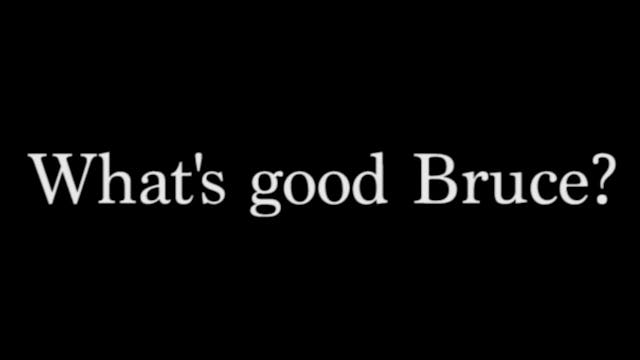WELL THEN THERE NOW
EUTERPE
•
13m
An unfaithful interpretation of John Zorn’s early-'80s film-script, A TREATMENT FOR A FILM IN 15 SCENES. The results of WELL THEN THERE NOW is considered a “list” film since Zorn’s conceptual film-script is more of a shot-list than a screenplay. The finished film is an exploration of the singularity of the image (but a highly playful one).
Zorn’s rules for rendering his script into a film (which he wanted the film to faithfully adhere to) were that every shot listed had to be photographed and included in the order it was listed in the script. Other than this, the script does not specify the duration of each shot or more specifics about how they needed to be interpreted. Klahr created a first version in which he was faithful to this approach but was unhappy with the film he created as it felt too much like a conceptual exercise and did not meet his own standards for what he considered to be a finished film.
At that point, Klahr decided to treat the script unfaithfully, just like any other screenplay for a film is treated by its director. [This of course is a filmmaking truism: the script is not the film.]
In Klahr's revised version of WELL THEN THERE NOW, he did not include every shot listed in the script and did not keep the shots he included in the order that they were listed. He also added three sets of images not called for in the script: lists of parakeets, auto grills and carpet samples. He added a voice-over of text quoted from his favorite Surrealist novel (Phillipe Soupalt’s "Last Nights of Paris") which was performed by his then-thirteen-year-old son, Slater. It was the moment where Slater’s voice was changing from childhood to adolescence and he was happy to document this transition before it disappeared. Klahr also decided his first version of the film was overly long at more than nineteen minutes and reduced this revised version to thirteen minutes.
Finally, in case anyone is wondering, the title of the film is taken from dialogue spoken by James Dean’s character to his father in the early police station scene in REBEL WITHOUT A CAUSE.
Up Next in EUTERPE
-
WHAT'S GOOD BRUCE?
A critique of the phenomenology of the studio space presented by Bruce Nauman's piece, "Walking in an Exaggerated Manner Around the Perimeter of a Square" from 1967 . The "exaggerated manner" being the pimp walk or swagger; both a culturally-specific and masculinist gesture in contrast to Nauman'...
-
WORKING CLASS
The cycle of the city of San Francisco as one proceeds through a day of work.
-
WORLD IN REVIEW
"Soon there will be shown to the workers of New York the evidence gathered by the keen eyes of our cameras. This evidence is totally unlike anything shown in newsreels taken by capitalist concerns, Whereas the capitalist cameramen... were constantly on the lookout for sensational material..." — ...



